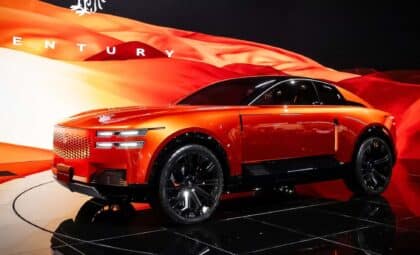 Photo: Toyota Motor North America
Photo: Toyota Motor North America
Toyota has released its 2020 North American Environmental Report, which tracks the numerous ways the company is helping reduce its environmental footprint in North America. For 2020, the automaker focused on five key areas: carbon, water, materials, biodiversity, and outreach.
These are tied to six goals that Toyota has set for 2050, which include completely eliminating all CO2 emissions across its manufacturing facilities and in the entire lifecycle of its cars.
Toyota Hybrids: Take a look at the full lineup
Last year, Toyota’s 2019 report showed it had managed to reuse or recycle 565 million gallons of water across its North American plants. In 2020, it did even better, recycling 623 million gallons, equivalent to the annual water use of 19,639 average Canadians.
At its manufacturing plant in Woodstock, Ontario, Toyota workers developed a new method for recycling the plastic resin used to mold front and rear bumpers. This method returns the resin to its original form without any degradation, thus ensuring that the plant successfully regains 100 percent of its scrap bumper material.
Toyota also announced that it saved 54.1 million pounds of cardboard boxes and 144.3 million pounds of wooden crates from 2017 to 2019 by introducing new returnable shipping containers.
New RAV4: Pick between 13 exciting trim levels 
And, over the past year, the automaker has reduced its absolute greenhouse gas emissions by another nine percent. Toyota predicts that over the next two years, that will grow to 40 percent compared to 2019 thanks to the use of VPPAs.
By 2025, Toyota intends to have an electrified version of its entire lineup available to customers. In 2020, it launched the first-ever RAV4 Prime plug-in hybrid, brought back the Venza nameplate as a hybrid, and released the all-new Sienna minivan with an exclusively hybrid powertrain. The Japanese automaker also doubled down on hydrogen fuel cell technology and released the second-generation Mirai, featuring an impressive 402-mile range.
“At Toyota, it’s imperative that we do our part to offer more sustainable solutions to our customers, while identifying ways to reduce our own impact on the environment — from infrastructure, to manufacturing, and beyond,” said Stephen Beatty, corporate vice president at Toyota Canada. “It’s not enough to talk the talk — so we’re very proud to ‘walk the walk’ alongside our valuable partners across Canada.”
For more details about the ways Toyota is reducing its environmental footprint, you can view the full 2020 North American Environmental Report on the official website.
Kurt Verlin was born in France and lives in the United States. Throughout his life he was always told French was the language of romance, but it was English he fell in love with. He likes cats, music, cars, 30 Rock, Formula 1, and pretending to be a race car driver in simulators; but most of all, he just likes to write about it all. See more articles by Kurt.








